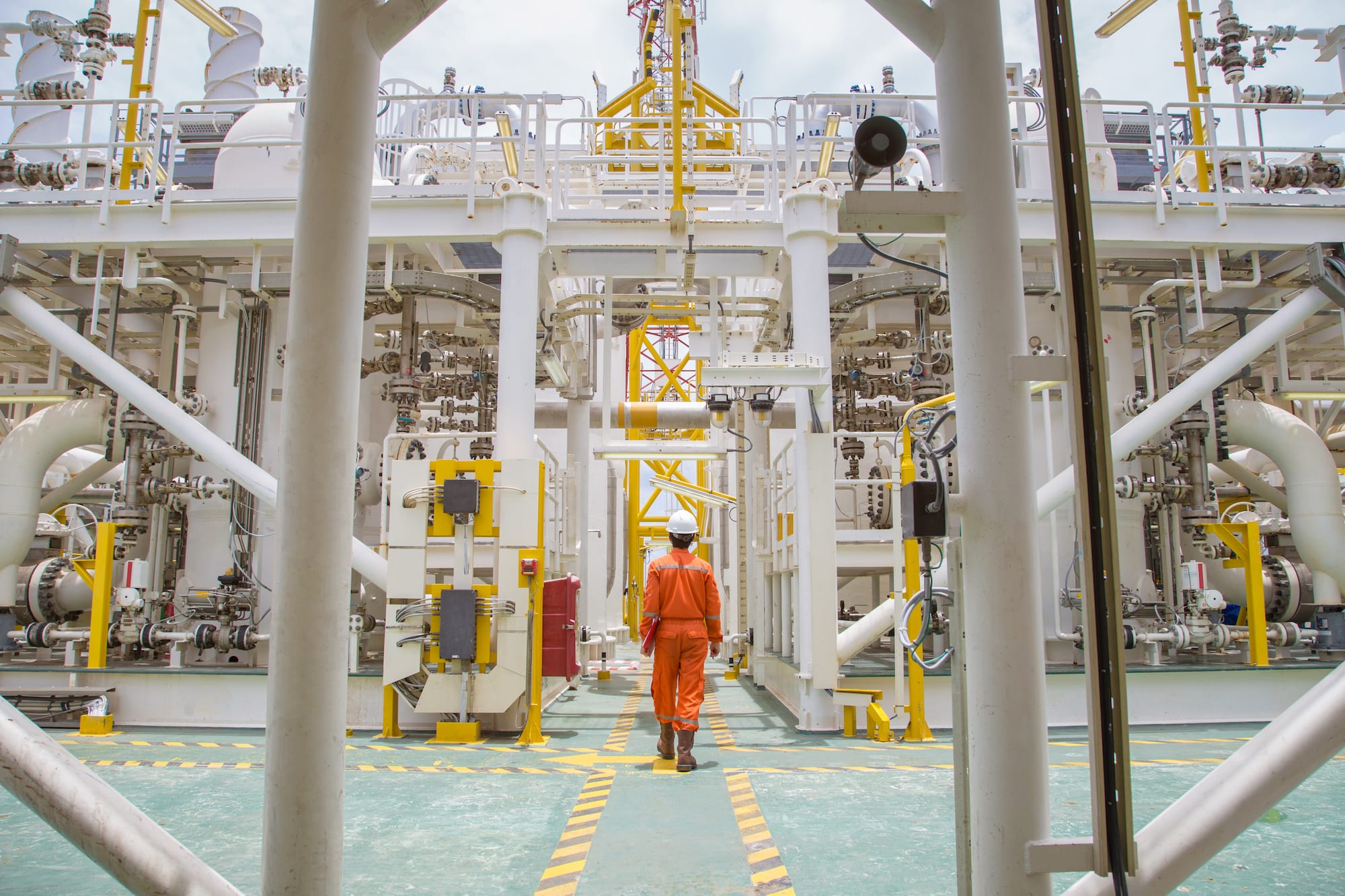For business leaders who operate complex equipment like oil rigs and refineries, “service” has a different meaning than for, say, a manufacturer that sells equipment and fixes it at a customer’s location. But this complex, often immovable equipment still breaks, which poses serious safety risks and can cost millions in downtime.
To avoid these costs, modern oil & gas equipment contains sensors and sophisticated data systems to flag problems. But many operators haven’t considered how to get that data into the hands of on-site technicians charged with keeping the equipment running, says Phil Schwarz, director of oil & gas product marketing at ServiceMax, who has worked in the industry for more than two decades. “[Operators] have tons of data, but now they need to move that data closer to the people who will act upon that information,” he says.
Field Service Digital spoke with Schwarz about the changing role of service in oil & gas how new technologies are helping operators get data out of the back office and into the hands of people who need it.
What are the biggest differences in how an oil & gas operator thinks about service?

Phil Schwarz, oil & gas product marketing director, ServiceMax
Phil Schwarz: In my experience, people in the oil & gas industry have traditionally used the term “service” in the context of a billable activity: I hire someone to fix, prepare or install an asset. After coming to ServiceMax, I realized that there’s a broader context to service. Service is synonymous with action on assets, and that action benefits someone, whether it’s an external customer or an internal customer.
For oil & gas operators, the wellhead or the well site is the customer. The wellhead is equipment and the well site is a location, but fundamentally it’s the same principle. If the operator is going to get the most performance out of their assets, they need to consider those assets to be the customer. Now, operators need technology to help advance their digital transformation journeys with internal customers in mind. If critical equipment goes down, it will likely affect external customers, too.
Is there a tendency among operators of complex assets like an oil & gas refinery or a pipeline to de-prioritize service for those internal ‘customers’?
For the most part, companies equip their people with paper, maybe an Excel sheet, or at best an internally developed software application.
There’s a big opportunity to provide these operators with technologies to better serve those internal customers, the assets themselves. Operators generally understand that they need to make the leap to do more, better and safer work on their assets. That translates to more asset uptime, increased productivity of plant and field personnel, faster first-time fix rates, and fewer safety and compliance incidents — a slew of valuable business outcomes.
Overall, these organizations are technologically savvy, right?
Operators already have thousands of sensors all over their facility. But the people who primarily use that data are in the back office. Operations and maintenance personnel at the facility do have access to that data, but they don’t have it at their fingertips. It’s not on a mobile device. As a result, when work is needed on an asset today, a person typically creates a work order that is sent to another person. There’s a time lag between identifying what work needs to be done and fixing the problem. In the near future, more and more companies will transform their execution processes so that assets, not people, flag problems (or potential problems) and dispatch a technician. And not only that, but the asset will also explain what needs to be done, how to do it and why.
SEE ALSO: The Latest Must-Have Service Tool for the Industrial IoT? Natural Language Generation Software.
How far along is the oil & gas to realizing that vision of proactive service, or assets alerting humans about potential problems?
Operators have most of the pieces in place, but they’re missing a key piece: an execution platform like ServiceMax. They have tons of data, but now they need to move that data closer to the people who will act upon that information. The de facto standard today is pen and paper. That standard is about to change and will change quickly.
Consider an oil & gas production operator today whose well produces roughly 1,000 barrels of oil per day. If oil is $50 per barrel, that well produces revenue of $50,000 per day. If that well goes down, the well site operator responsible for that asset would receive a text alert and then travel to the asset to troubleshoot the problem. But that person needs information about the problem, how to fix it and the tools to collaborate with others that are offsite to help resolve the problem. He or she needs to know the steps involved in fixing the problem, and whether there are forms or other documentation steps that need to be completed.
Typically, the first thing a person needs to do when they arrive on a well site is they need to complete a job safety analysis to make sure the area is safe. The next step is to troubleshoot and capture information about the issue, ideally on a mobile device. Once the work is complete, that electronic record has predictive value for integration with an asset performance management (APM) application.
Why isn’t every oil & gas company already doing this? What are the major stumbling blocks?
The top reason is awareness. Many operators are just gaining awareness that there are applications that are focused on the transformation of service execution and inherently designed for offline use.
Another challenge is that the industry tends to be siloed, and operators tend to look for providers that specialize in the oil and gas industry. That’s not necessarily a bad thing, but there are best practices and innovations in other industries that can — and should — be adopted within oil & gas. I would be cautious about partnering with a service execution software provider that focuses exclusively on the oil & gas industry. Providers should strongly consider a partner that has a presence in oil & gas, of course, but also a presence in other industries with complex and critical assets in order to leverage relevant best practices.


Share this: